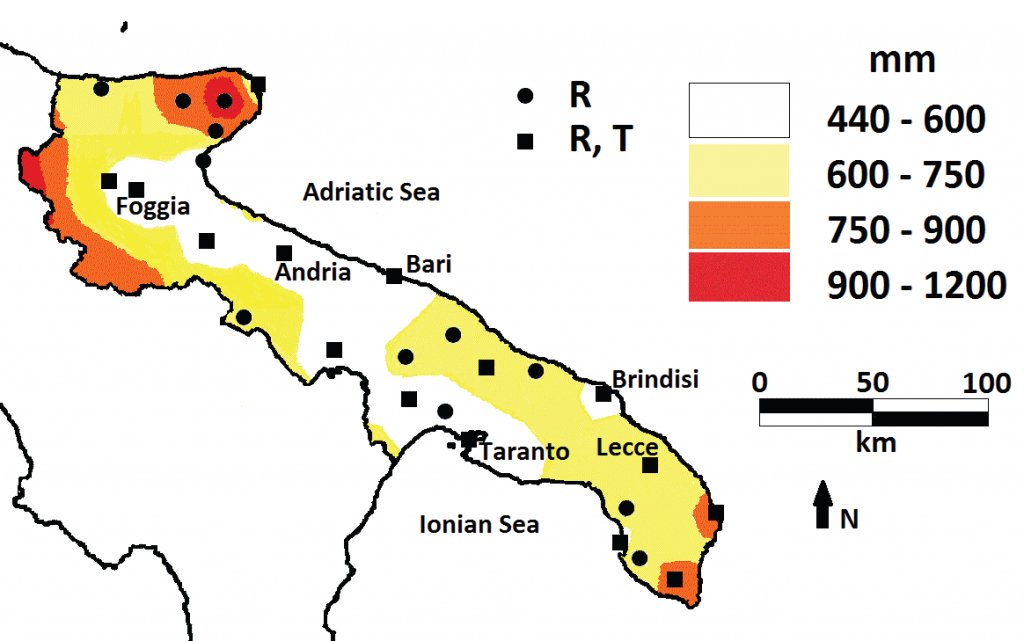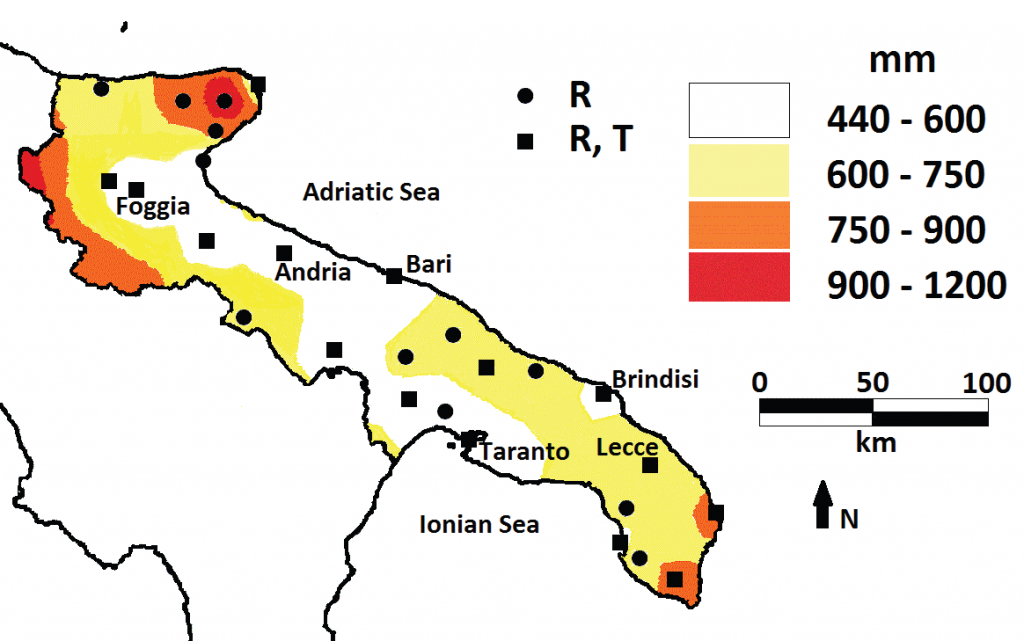
Seawater intrusion is the main cause of groundwater salinisation
in Italy. The largest coastal aquifers, highly vulnerable to
salinisation, are in Apulia. For these aquifers, main changes in terms
of climate change and utilisation are discussed together with piezometric
trends, as the latter are relevant triggering factors for upconing and
lateral seawater intrusion. For this purpose, time series from 1921
to 2016 concerning climate (rainfall and temperature), from 1965 to
2016 concerning groundwater availability (piezometric values), and
recent periodic data on potable utilisation are discussed. Climate and
groundwater availability trends at 2016 are compared with trends previously assessed, using the same dataset (1921-2001 for rainfall and
temperature). The negative characteristic of rainfall 1921-2001 trend
improved in the next years up to disappear in the assessment of rainfall
1921-2016 trend. Notwithstanding the improving of rainfall trend
and the reduction of groundwater utilisation, both observed at 2016,
the improvement of piezometric trends at 2016 is not enough to remove
a prevailing decreasing trend, previously observed. The increases of temperature and effective evapotranspiration should be considered a relevant explanation of groundwater availability reduction. The consequence of these results should be quickly considered in the management of groundwater resources.
The complete article is an open access on the Italian Journal of Groundwater web site:
http://www.acquesotterranee.online/index.php/acque/article/view/374
Casarano, D., Dragone, V., & Polemio, M. (2019). Groundwater resources at salinisation risk: effects of climate and utilisation changes in the case of Apulian coastal aquifers (Southeastern Italy). Acque Sotterranee – Italian Journal of Groundwater, 8(1).
https://doi.org/10.7343/as-2019-374
